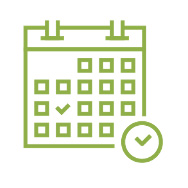How Employers Can Provide Effective Leadership & Take Care of Their Workforce During COVID-19
Proactive Tips Employers Can Take to Keep Employee Morale and Engagement Up During the Crisis.
Whether you’re the owner of a mom-and-pop shop or a decision-maker at a larger company, it’s important to know the different structures for group health insurance plans. Knowing these differences can help you and your business find a plan that works best for your employees and your bottom line.
By now, most of the workforce has shifted to working remotely from home during the pandemic. This change can cause serious declines in employee productivity, engagement and overall team performance. Gallup has found that universally employees look to leaders for trust, compassion, stability, and hope. These needs are especially needed during a crisis such as COVID-19. It’s crucial for employers to maintain and strengthen employee communications to bolster morale and continue to provide effective leadership. Just as business operations have been severely impacted so has your workforce. Employers can continue to maintain a company culture of positivity and productivity through weekly check-ins digitally and telephonically sharing events and uplifting stories. Keeping your office culture intact, helping to keep employee morale up and easing mental and financial strains are just a few ways to reduce stress for you employees.
Here are some proactive tips employers can take to improve overall team performance during COVID-19:

Have a plan.
Make sure employees have access to the materials and equipment they need to do their jobs from home. Technology and communication provide the stability employees need.1

Set “office hours.”
Designate specific working hours. For example, 9:00 a.m. to 5:00p.m.

Communicate Expectations Early.
Communicate the level of communication you are expecting from your employees. Set guidelines on responsiveness and preferred method of communication.2 If your office hours are 9-5, employees should be available for meetings and working during the allotted hours. It is also important to communicate the expectations of your employees. For example, we are working on “X,” “Y” is needed, and the deadline is “Z”.3

Engage Regularly.
Established regular check-ins with your team. Each employee is different, take time to understand how often your employees need you to check-in with them.

Remind them of the resources available to them.
It is especially important during this time to remind employees of the resources available to them. Employees will want to know that the organization cares about their well-being during a crisis. Especially during these uncertain times.4 For example:
- Do your best to provide useful information about COVID-19.
- Work policies, such as paid time off and leave.
- Connect with your organizations health plan to see what they are doing for your employees and communicate that.
- Telehealth
- TalkSpace
MDLIVE - WellSpark resources such as Coping During COVID-19 content videos available in our Health Video Library.

Take advantage of technology.
Use technology to build and maintain a community with your employees Use a web bases video conference services such as Zoom to host virtual celebrations. For example, birthdays or team victories. This allows teams to connect “face-to-face.”

Show empathy and be available.5
During this time employees may be feeling overwhelmed and anxious. Let your staff know you are to them to talk about fears, to answer questions and to reassure them about work and other issues that might come up when working remotely.
References
[1] Gallup. https://www.gallup.com/workplace/304607/remember-needs-followers-during-covid.aspx
[3] Gallup. https://www.gallup.com/workplace/288956/covid-teams-working-remotely-guide-leaders.aspx
[4] Forbes. https://www.forbes.com/sites/alankohll/2020/03/22/how-to-help-employees-cope-with-covid-19/#452acd584cbd
[5] American Psychiatric Association. http://www.workplacementalhealth.org/Employer-Resources/Working-Remotely-During-COVID-19

